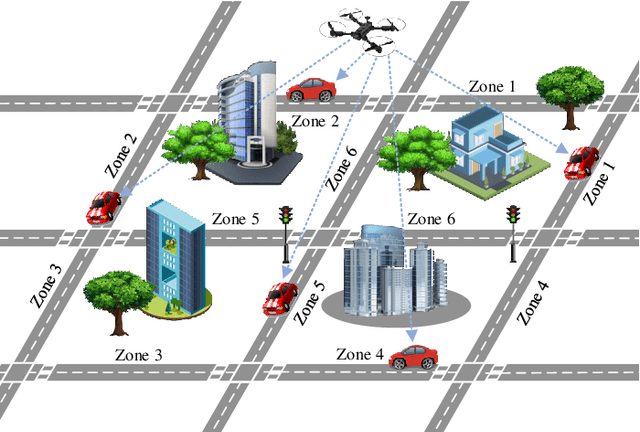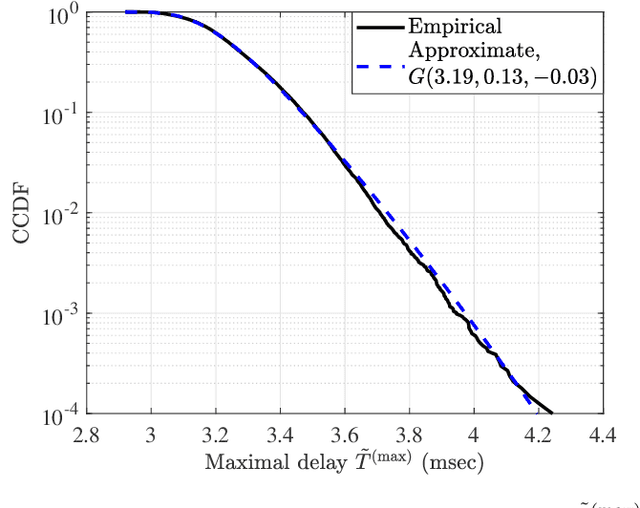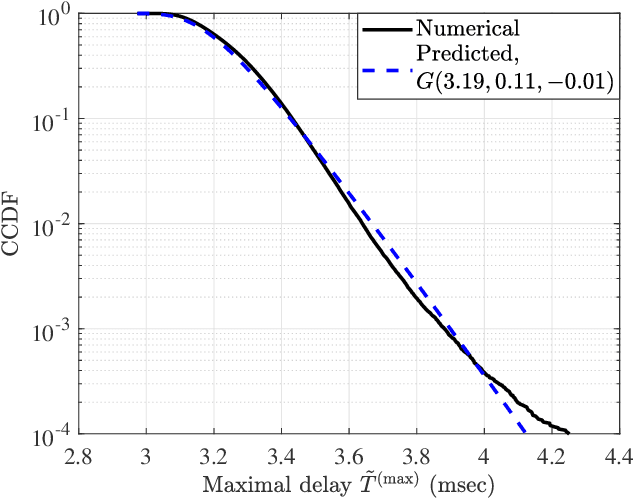Nirmal D. Wickramasinghe
URLLC-Aware Proactive UAV Placement in Internet of Vehicles
Jan 30, 2024



Abstract:Unmanned aerial vehicles (UAVs) are envisioned to provide diverse services from the air. The service quality may rely on the wireless performance which is affected by the UAV's position. In this paper, we focus on the UAV placement problem in the Internet of Vehicles, where the UAV is deployed to monitor the road traffic and sends the monitored videos to vehicles. The studied problem is formulated as video resolution maximization by optimizing over the UAV's position. Moreover, we take into account the maximal transmission delay and impose a probabilistic constraint. To solve the formulated problem, we first leverage the techniques in extreme value theory (EVT) and Gaussian process regression (GPR) to characterize the influence of the UAV's position on the delay performance. Based on this characterization, we subsequently propose a proactive resolution selection and UAV placement approach, which adaptively places the UAV according to the geographic distribution of vehicles. Numerical results justify the joint usage of EVT and GPR for maximal delay characterization. Through investigating the maximal transmission delay, the proposed approach nearly achieves the optimal performance when vehicles are evenly distributed, and reduces 10% and 19% of the 999-th 1000-quantile over two baselines when vehicles are biased distributed.
Transmit Power Optimization of IoT Devices over Incomplete Channel Information
May 27, 2023Abstract:Efficient resource allocation (RA) strategies within massive and dense Internet of Things (IoT) networks is one of the major challenges in the deployment of IoT-network based smart ecosystems involving heterogeneous power-constrained IoT devices operating in varied radio and environmental conditions. In this paper, we focus on the transmit power minimization problem for IoT devices while maintaining a threshold channel throughput. The established optimization literature is not robust against the fast-fading channel and the interaction among different transmit signals in each instance. Besides, realistically, each IoT node possesses incomplete channel state information (CSI) on its neighbors, such as the channel gain being private information for the node itself. In this work, we resort to Bayesian game theoretic strategies for solving the transmit power optimization problem exploiting incomplete CSIs within massive IoT networks. We provide a steady discussion on the rationale for selecting the game theory, particularly the Bayesian scheme, with a graphical visualization of our formulated problem. We take advantage of the property of the existence and uniqueness of the Bayesian Nash equilibrium (BNE), which exhibits reduced computational complexity while optimizing transmit power and maintaining target throughput within networks comprised of heterogeneous devices.
 Add to Chrome
Add to Chrome Add to Firefox
Add to Firefox Add to Edge
Add to Edge